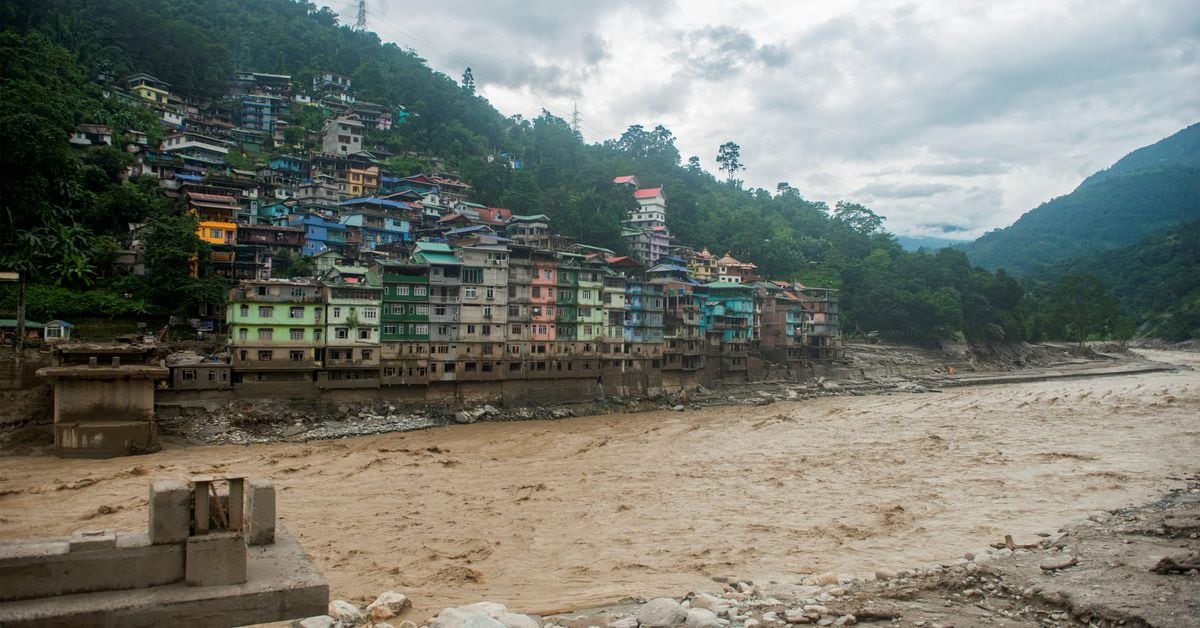@blue Ocean
FULL MEMBER

- Joined
- Jul 2, 2023
- Messages
- 668
- Reaction score
- 0
- Country
- Location

Sikkim disaster: 1,200 MW project dam washed away
Teesta Urja, the second biggest run-of-the-river hydro power project in India, suffered massive damage due to flood caused by the breach in Lhonak lake in north-west Sikkim on the intervening night of Tuesday and Wednesday.
Sikkim disaster: 1,200 MW project dam washed away
ByPramod Giri, SiliguriOct 05, 2023 07:16 AM IST

Teesta Urja, the second biggest run-of-the-river hydro power project in India, suffered massive damage due to flood caused by the breach in Lhonak lake in north-west Sikkim on the intervening night of Tuesday and Wednesday.
Teesta Urja, the second biggest run-of-the-river hydro power project in India, suffered massive damage due to flood caused by the breach in Lhonak lake in north-west Sikkim on the intervening night of Tuesday and Wednesday.
The 1,200 MW power project on Teesta river, one of the most dammed rivers in the country, is located between Chungthang and Mangan in Mangan district in North Sikkim and is the biggest of nine working hydro projects on the river in Sikkim. Work on 15 dams is going on and another 28 are proposed over the river to tap its hydel capacity of about 4,200 MW.
Sunil Saraogi, the executive chairman of Sikkim Urja Limited (formerly Teesta Urja Limited) said such was the force of the water than the dam at Chungthang was washed away in just ten minutes.
“At 11.58 pm on Tuesday we got information from ITBP (Indian Tiber Border Police) about the flash flood. Immediately our team rushed to open the gates. Before they could open the gates, the flood hit them . There were 12 to 13 people in the team and they somehow saved themselves by running to the other side of the dam. They were evacuated by ITBP by 2 pm on Wednesday,” he said.
He added that the 200-meter-long bridge connecting the power house to the dam was also washed away. “The entire power house is submerged under water and it is too early to assess the damage,” he said, adding that the cost of rebuilding the project would run into thousands of crores of rupees.
Visuals from the project site show large portions of the dam’s wall missing .
According to the Sikkim disaster management authority, the collapse of the Chungthang dam resulted in sudden surge of 15-20 feet in water level in downstream areas.
The power project was commissioned in February 2017 and it was only in 2022 that it started making profit, generating more power than the capacity, because of heavy flow of water. “We were running at 120% of capacity utilization,” said Saraogi. Sikkim government had 60.08% share in the project.
Local activists have for long warned of the adverse environmental implications of the run-of-the-river projects on the 414 km long Teesta river that originates from Punhunri Mountain in north Sikkim.
Run of the river projects are those which provides for a facility that channels flow of water from the river through a canal or penstock to spin a turbine to generate electricity. Run of the river projects does not support large irrigation facilities.

Concern over hydel projects in Sikkim after Teesta Urja dam washed away
Gyatso Lepcha, general secretary of Affected Citizens of Teesta (ACT), said the tall claim that the dam of Teesta Urja hydro-power project would be an engineering feat and would be amongst the strongest in the world has turned out to be a big joke jeopardising human lives and properties.







